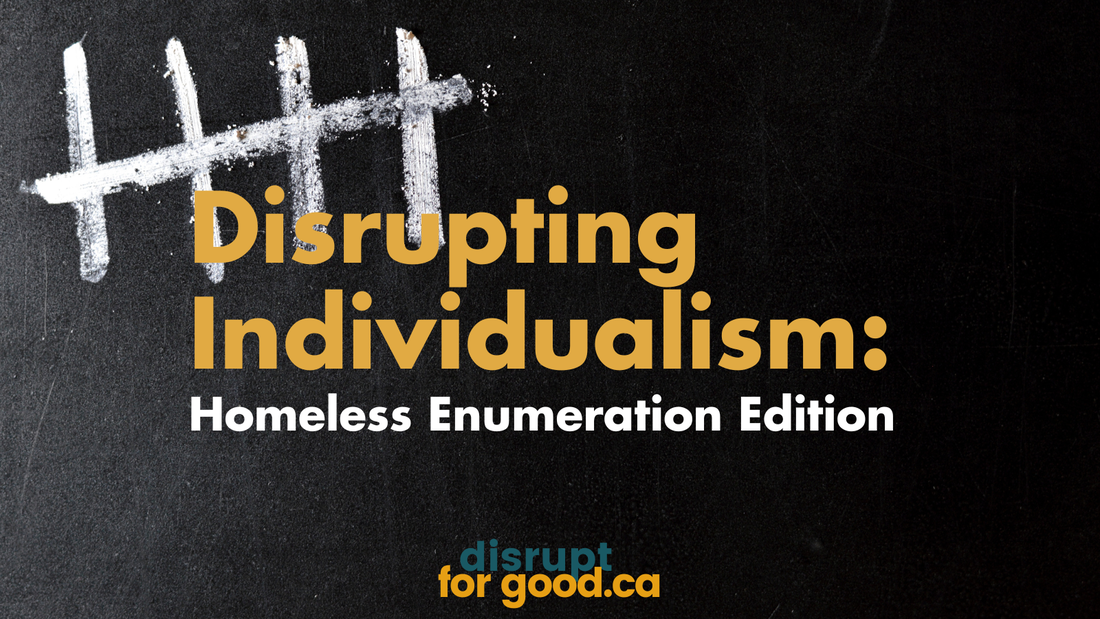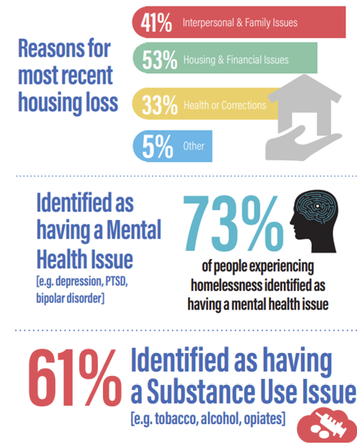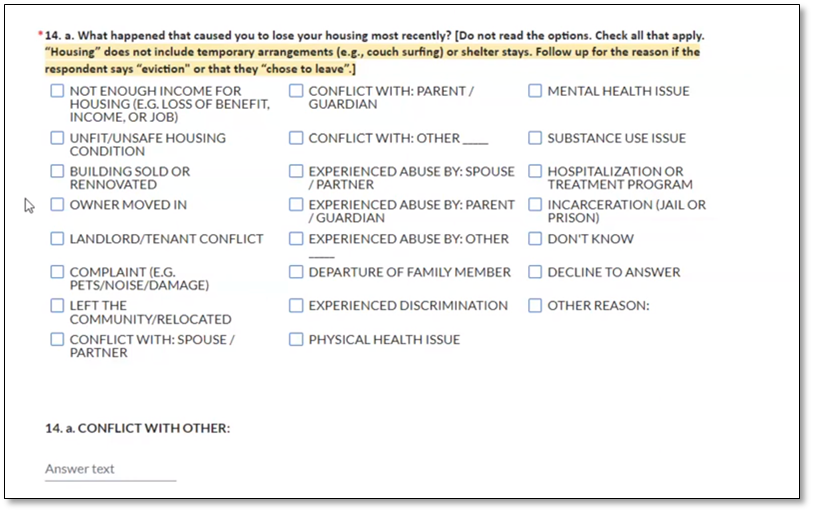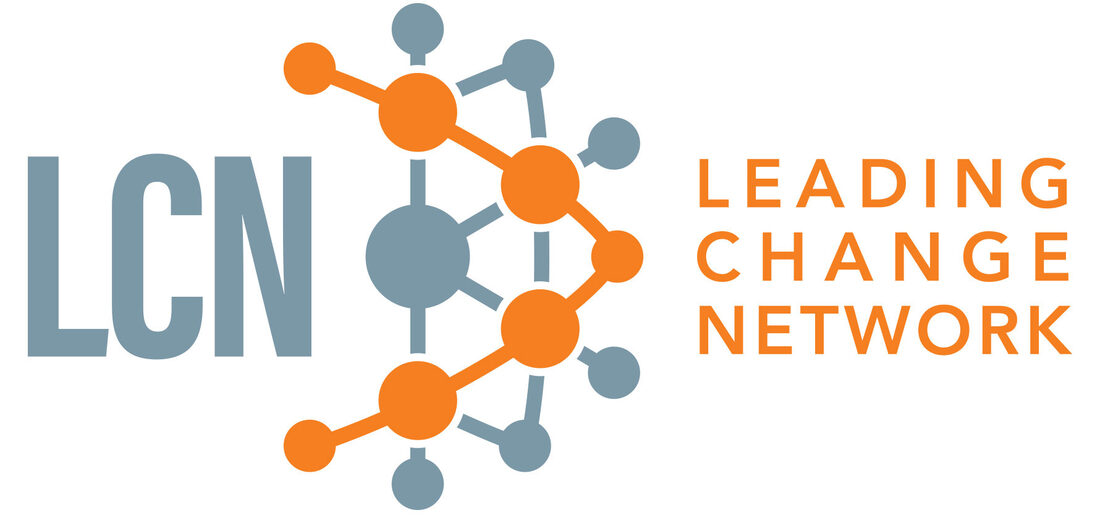|
A Homeless Enumeration is a community-level count and survey of people experiencing homelessness at a particular point in time. These are mandated by the Ontario Ministry of Municipal Affairs and Housing, but they are conducted regularly in other jurisdictions in Canada and beyond. Most homeless enumerations in Ontario use a combined methodology of a PiT (Point in Time) count, as well as a survey to try to glean more information that communities can then act on to improve our understanding of homelessness, inform efforts to meet the needs of people experiencing homelessness in a given community as well as long-term strategies to prevent and reduce homelessness, and more. The website for the one here in Simcoe County reads “Our goal is to end homelessness in Simcoe County. The data we gather helps us do that.” I wrote that sentence. I have supported our communications efforts through four enumerations. We do gather some good data from enumerations that help us better understand the demographics we are trying to support - how many people, what type of housing they want and where, what barriers they face - but the more I am learning (and unlearning) about homelessness, the less I believe that the enumeration we are doing supports ending homelessness. In fact, I now believe it perpetuates harmful stereotypes. VI-SPDATs as Enumeration Surveys In Simcoe County, our survey is based on the VI-SPDAT, which stands for Vulnerability Index - Service Prioritization Decision Assistance Tool, a pre-screening tool developed in 2013 by consulting firms Community Solutions and OrgCode and used in over a thousand communities across the US, Canada, and Australia. The VI-SPDAT was a response to the desire to standardize assessment. Based on assessment scores, individuals are triaged and prioritized for housing resources in the community. However, the VI-SPDAT has been criticized in recent years as community-level studies show “consistent evidence of racial bias and unreliability in its use.” These criticisms led OrgCode’s Iain De Jong to announce that VI-SPDAT work (ie supporting it and developing new versions) would be discontinued. One very fair point that De Jong makes is that the VI-SPDAT is a triage tool, not a stand-alone assessment tool, and is often used in community in ways it was never intended to be used. He notes that it is a “Decision Assistance Tool,” not a “Decision Making Tool.” Perhaps use as the survey for an enumeration is one of those “off-label” uses. Either way, it’s the foundation of our enumeration survey here. I take issue with a problematic triaging survey, often administered by a well-meaning stranger to a person in a vulnerable situation who is self-reporting their experiences in exchange for a gift card to guide our understanding of how we got here and inform our collective strategies to end homelessness. Letting Our Systems and Policymakers Off the Hook In Simcoe County, enumeration results get rolled up into neat infographics. I made the first one or two myself. Here is a section of Simcoe County’s 2022 Homeless Enumeration Infographic, shared widely with policymakers and community stakeholders alike: That section on reasons for most recent housing loss, where the top 3 answers are Interpersonal and Family Issues, Housing and Financial Issues, and Health or Corrections, is informed by question 14 on the survey: This all looked very normal to me for years. But lately, I find myself noticing that these are very individualized reasons to lose housing. (And what kind of passive language choice is “lose housing” anyway?!? No one ever misplaced their housing. Word choice matters.)
Anyway. No systemic reasons are listed. So unless our survey respondent is willing and able to name “unbridled capitalism” or “the financialization of housing” or even just “social assistance rates and minimum wage levels that are completely detached from the current costs of living and are effectively legislated poverty,” the only real options are to blame themselves or another individual. And even if they did name a systemic reason, they'd just get lumped in as "other." And the sections where 73% identified as having a mental health issue and 61% identified as having a substance issue? No effort is made at all to differentiate between mental health and substance use issues as a cause of homelessness and those caused or exacerbated by homelessness. So the unsuspecting infographic viewers draw their own shallow conclusions, further cementing homelessness as a personal and moral failing. And that is completely out of step with everything we understand about homelessness as a societal failing and not a personal one. When we ask for policy changes while putting out reports that individualize the causes of homelessness, we muddy our message big time. Also, it lets our policymakers off the hook. Not to mention, it actually hurts my heart to consider the way that our triage tool and, in turn our homeless enumeration survey, further perpetuates the message to our unhoused neighbours that their homelessness is their fault. We actively contribute to them internalizing this untruth and starting to believe it themselves. Disrupting Individualism in Homelessness So how can we do better? There is an argument to be made that now that we have a By-Name List, with information updated by a case manager on every individual (who has provided consent) every 30 days, we don’t need biannual enumerations anymore. That the data gathered this way will be more reliable and definitely more up-to-date. But I’m open to arguments for maintaining the enumeration, if they include a survey and subsequent reporting that doesn’t individualize the causes of homelessness. If you have ideas, leave them below! But, enumeration or not, we can all disrupt the narrative of individualism in homelessness by redirecting conversations away from individualized causes of homelessness and draw attention to the real, systemic causes.
2 Comments
Sharon Suter
10/3/2022 04:29:49 am
Great read, love your analysis. As well, there are huge variations in mental health and substance use issues. From smoking tobacco to overuse of opiates is a huge leap as is mild depression to psychosis. Plus, both of those categories are riddled with stigma, - we need to be careful about how we use them.
Reply
Jennifer van Gennip
10/3/2022 06:08:52 pm
Great points, Sharon!
Reply
Leave a Reply. |
AuthorI'm Jennifer. I am an advocacy and communications strategist working with multiple charities and nonprofits. And I want to disrupt our sector for good. Archives
April 2024
Categories |




 RSS Feed
RSS Feed
